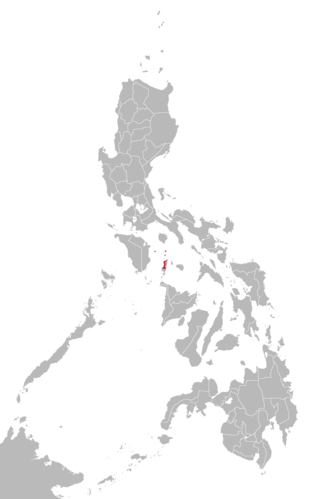Related Research Articles

The Papuan languages are the non-Austronesian and non-Australian languages spoken on the western Pacific island of New Guinea, as well as neighbouring islands in Indonesia, Papua New Guinea, Solomon Islands, and East Timor by around 4 million people. It is a strictly geographical grouping, and does not imply a genetic relationship.

The Bisayan languages or Visayan languages are a subgroup of the Austronesian languages spoken in the Philippines. They are most closely related to Tagalog and the Bikol languages, all of which are part of the Central Philippine languages. Most Bisayan languages are spoken in the whole Visayas section of the country, but they are also spoken in the southern part of the Bicol Region, islands south of Luzon, such as those that make up Romblon, most of the areas of Mindanao and the province of Sulu located southwest of Mindanao. Some residents of Metro Manila also speak one of the Bisayan languages.

The Philippine languages or Philippinic are a proposed group by R. David Paul Zorc (1986) and Robert Blust that include all the languages of the Philippines and northern Sulawesi, Indonesia—except Sama–Bajaw and a few languages of Palawan—and form a subfamily of Austronesian languages. Although the Philippines is near the center of Austronesian expansion from Formosa, there is little linguistic diversity among the approximately 150 Philippine languages, suggesting that earlier diversity has been erased by the spread of the ancestor of the modern Philippine languages.

The twenty Micronesian languages form a family of Oceanic languages. Micronesian languages are known for their lack of plain labial consonants; they have instead two series, palatalized and labio-velarized labials.

Stephen Adolphe Wurm was a Hungarian-born Australian linguist.
The Republic of Vanuatu has the world's highest linguistic density per capita.
Arthur Capell was an Australian linguist, who made major contributions to the study of Australian languages, Austronesian languages and Papuan languages.

The Kayagar languages are a small family of four closely related Trans–New Guinea languages spoken around the Cook River of Indonesian New Guinea:
The Gorontalo–Mongondow languages are a group of Austronesian languages spoken in northern Sulawesi, Indonesia.
The Minahasan languages are a subgroup of the Austronesian languages spoken by the Minahasa people in northern Sulawesi, Indonesia. They belong to the Philippine subgroup.
Tofanma or Tofamna is a poorly documented Papuan language of Indonesia. Wurm (1975) placed it as an independent branch of Trans–New Guinea, but Ross (2005) could not find enough evidence to classify it. It appears to be related to Namla, a neighboring language.
Davaoeño (Dabawenyo) is a language of the Davao Region of Mindanao in the Philippines. According to Zorc (1977), it is a native Mansakan language influenced by Cebuano and Tagalog. Traditionally, it was the principal language of the Davaoeño people, but it is no longer spoken in Davao City as speakers have shifted to a local dialect of the Cebuano language, called Davaoeño Cebuano.
Lenakel, or West Tanna, is a dialect chain spoken on the western coast of Tanna Island in Vanuatu.
Darrell T. Tryon was a New Zealand-born linguist, academic, and specialist in Austronesian languages. Specifically, Tryon specialised in the study of the languages of the Pacific Islands, particularly Vanuatu, the Solomon Islands, and the French-speaking Pacific.
The Proto-Philippine language is a reconstructed ancestral proto-language of the Philippine languages, a proposed subgroup of the Austronesian languages which includes all languages within the Philippines as well as those within the northern portions of Sulawesi in Indonesia. Proto-Philippine is not directly attested to in any written work, but linguistic reconstruction by the comparative method has found regular similarities among languages that cannot be explained by coincidence or word-borrowing.

Bantoanon or Asi is a regional Bisayan language spoken, along with Romblomanon and Onhan, in the province of Romblon, Philippines. Asi originated in the island of Banton, Romblon and spread to the neighboring islands of Sibale, Simara, and the towns of Odiongan and Calatrava on Tablas Island. The Asi spoken in Odiongan is called Odionganon, Calatravanhon in Calatrava, Sibalenhon in Concepcion, Simaranhon in Corcuera, and Bantoanon in Banton.
Clemens Lambertus Voorhoeve is a Dutch linguist who specializes in Papuan languages.
Northern Sorsogon is a Bisayan language spoken in the central part of Sorsogon, Philippines, in Sorsogon City and the municipalities of Casiguran, and Juban. It is closely related to, but distinct from Southern Sorsogon which is spoken in the southern part of Sorsogon.
Tom Dutton was an Australian linguist specialising in Papuan languages and other languages of Papua New Guinea.
Classical Cebuano, or Spanish-Era Cebuano, was a form of the Cebuano language spoken during the Spanish colonial era of the Philippines. It was the primary language spoken in Cebu, Bohol, and other parts of Visayas and Mindanao.
References
- ↑ "Zorc, R. David Paul". WorldCat.org. Retrieved 2022-03-18.
- ↑ Zorc, R. David. "Yolngu-Matha dictionary". National Library of Australia. Retrieved 2022-03-18.
- ↑ "Episode 13: R. David Zorc, part 1, on the Bisayan languages". The Weekly Linguist Podcast. 2021-01-14. Retrieved 2022-03-18.
- ↑ "Episode 14: R. David Zorc, part 2, more on the Bisayan languages". The Weekly Linguist Podcast. 2021-01-14. Retrieved 2022-03-18.
- 1 2 R. David Zorc. zorc.net. Accessed 2022-03-17.
- ↑ Zorc, R. David. The Bisayan dialects of the Philippines: Subgrouping and reconstruction. C-44, xxiv + 351 pages. Pacific Linguistics, The Australian National University, 1977. doi : 10.15144/PL-C44
- ↑ Black, P. and Breen, G. "The School of Australian Linguistics". In Simpson, J., Nash, D., Laughren, M., Austin, P. and Alpher, B. editors, Forty years on: Ken Hale and Australian languages. PL-512:161-178. Pacific Linguistics, The Australian National University, 2001. doi : 10.15144/PL-512.161
- ↑ Zorc, R. David. "7. A glossary of Austronesian reconstructions". Comparative Austronesian Dictionary. Berlin, New York: De Gruyter Mouton. doi:10.1515/9783110884012.2.1105.
- ↑ Zorc, R. David (1991). Tagalog slang dictionary. Kensington, MD: Dunwoody Press. ISBN 978-0-931745-56-0. OCLC 26179986.
- ↑ Tan, Michael L. (2013-05-09). "Wise voting". Inquirer.net. Retrieved 2022-03-18.
- ↑ "R. David Zorc Field Notes". SEAlang Projects. Retrieved 2022-03-18.